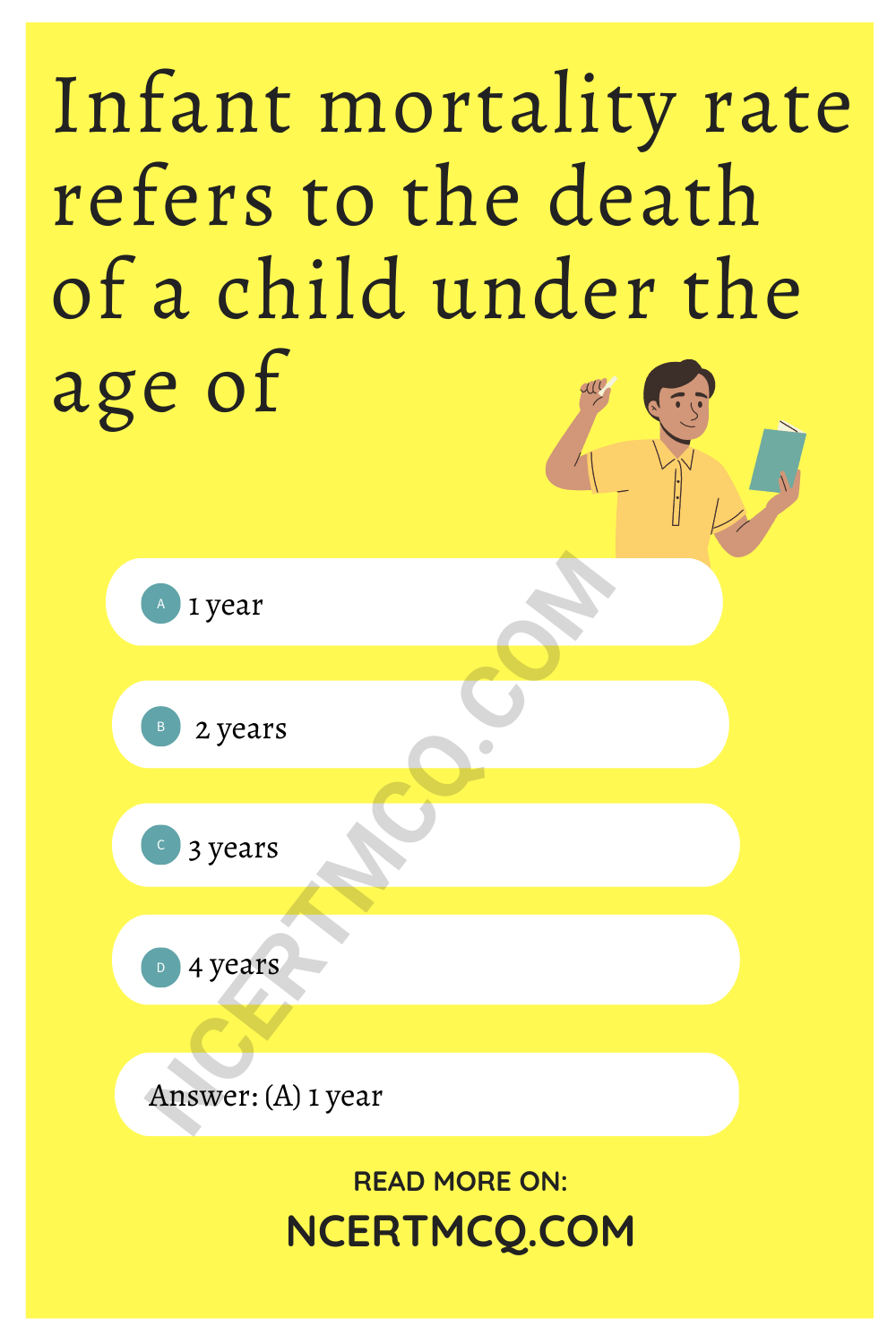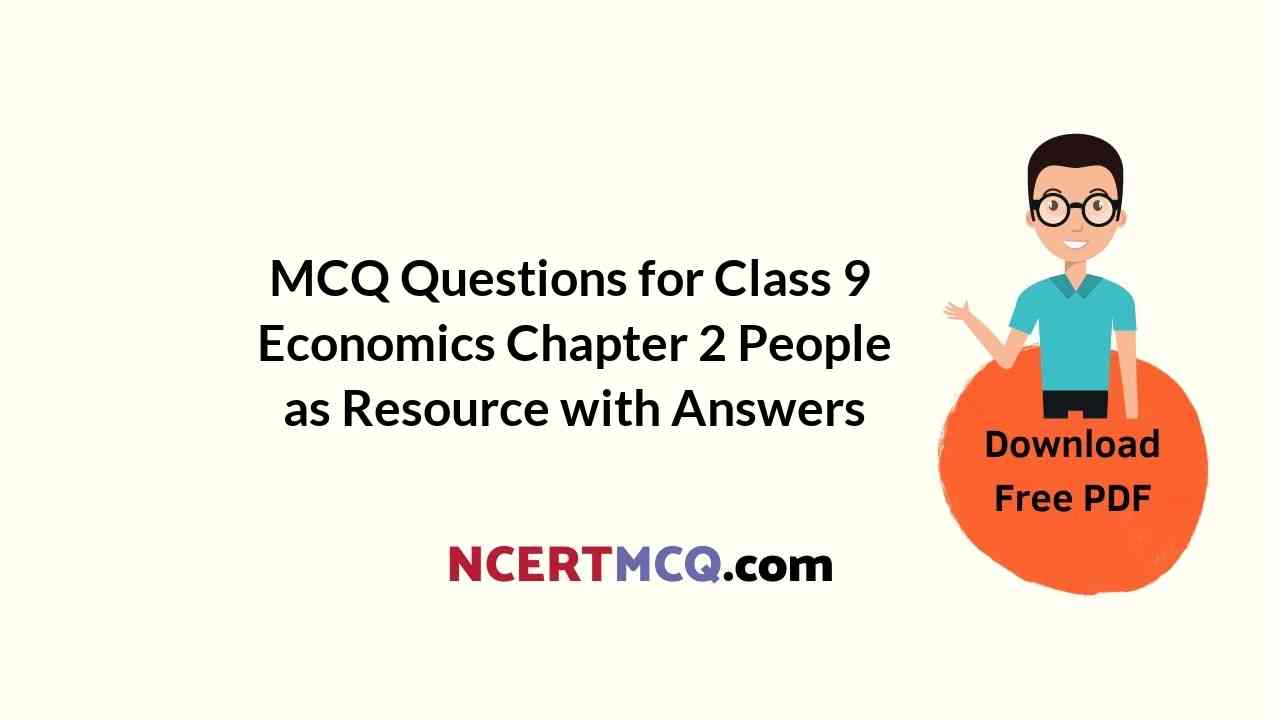Check the below Online Education NCERT MCQ Questions for Class 9 Economics Chapter 2 People as Resource with Answers Pdf free download. MCQ Questions for Class 9 Social Science with Answers were prepared based on the latest exam pattern. We have Provided People as Resource Class 9 Economics MCQs Questions with Answers to help students understand the concept very well. https://ncertmcq.com/mcq-questions-for-class-9-social-science-with-answers/
Class 9 Social Science Economics Chapter 2 MCQ With Answers
Economics Class 9 Chapter 2 MCQs On People as Resource
Choose the correct option:
People As Resource Class 9 MCQ Question 1.
Which of the following is the most labour absorbing sectors of the Indian economy?
(a) Primary sector
(b) tertiary sector
(c) Secondary sector
(d) Private sector
Answer
Answer: (a) Primary sector
Class 9 Economics Chapter 2 MCQ With Answers Question 2.
Which of the following is included in the primary sector?
(a) Manufacturing
(b) Tourism
(c) Forestry
(d) Communication
Answer
Answer: (c) Forestry
Class 9 Economics Chapter 2 MCQ Question 3.
Which of the following is included in the tertiary sector?
(a) Fishing
(b) Trade
(c) Mining
(d) Health
Answer
Answer: (d) Health
Economics Class 9 Chapter 2 MCQ Question 4.
Which of the following is included in the secondary sector?
(a) Poultry farming
(b) Manufacturing
(c) Transport
(d) Quarrying
Answer
Answer: (b) Manufacturing
Class 9 People As Resource MCQ Question 5.
Investment in human capital can be made through
(a) Education
(b) Training
(c) Medical care
(d) All the three
Answer
Answer: (d) All the three
Economics Chapter 2 Class 9 MCQ Question 6.
The literacy rate during 2010-11 was
(a) 64%
(b) 74%
(c) 70%
(d) 80%
Answer
Answer: (b) 74%
Class 9 Economics Chapter 2 MCQ Online Test Question 7.
Which of the following sectors faces the problem of seasonal unemployment?
(a) Agriculture
(b) Service sector
(c) Trade
(d) IT sector
Answer
Answer: (a) Agriculture
MCQ Questions For Class 9 Economics Chapter 2 Question 8.
Infant mortality rate is the death of a child under
(a) One year
(b) Three, year
(c) Two year
(d) Four year
Answer
Answer: (a) One year
Ch 2 Economics Class 9 MCQ Question 9.
The workforce population includes people from 15 years to
(a) 59 years
(b) 62 years
(c) 60 years
(d) 65 years
Answer
Answer: (a) 59 years
People As A Resource Class 9 MCQ Question 10.
Which age group of children does the Sarva Siksha Abhiyan aim to promote education?
(a) 6 to 10 years
(b) 5 to 3 years
(c) 6 to 14 years
(d) 7 to 12 years
Answer
Answer: (c) 6 to 14 years

Chapter 2 Economics Class 9 MCQ Question 11.
The number of females per thousand males refers to :
(a) Sex Ratio
(b) Literacy Rate
(c) Infant Mortality Rate
(d) Birth Rate
Answer
Answer: (a) Sex Ratio
Class 9 Economics Chapter 2 MCQs Question 12.
Decrease in IMR (Infant Mortality Rate) of a country signifies:
(a) Increase in life expectancy
(b) Increase in GNP
(c) Economic development of a country
(d) Increase in number of colleges in a country
Answer
Answer: (a) Increase in life expectancy
Class 9 Eco Ch 2 MCQ Question 13.
What is the life expectancy in India as per the census of 2000?
(a) 72 years
(b) 53 years
(c) 64 years
(d) 80 years
Answer
Answer: (c) 64 years
Economics Ch 2 Class 9 MCQ Question 14.
Which one of the following is considered important to create a ‘virtuous cycle’ by the parents?
(a) To sand their children to the school
(b) To provide goods food to their children
(c) To join their children in corporate schools
(d) To take care of the health and education of their children
Answer
Answer: (d) To take care of the health and education of their children
Class 9th Economics Chapter 2 MCQ Question 15.
Which one from the following is the most labour absorbing sector?
(a) Agriculture
(b) Fisheries
(c) Poultry farming
(d) Mining
Answer
Answer: (a) Agriculture
Question 16.
What is the aim of Sarva Siksha Abhiyan?
(a) To provide elementary education to women
(b) To provide elementary education to the rural poor
(c) To provide elementary education to all children in the age group 6-14 years
(d) To provide elementary education to the urban poor
Answer
Answer: (c) To provide elementary education to all children in the age group 6-14 years
Question 17.
What is the expended form of PHC
(a) Public Health Club
(b) Private Health Club
(c) Primary Health Centre
(d) None of these
Answer
Answer: (c) Primary Health Centre
Question 18.
What is the sex-ratio of India According to 2001 census, :
(a) 921 females per 1000
(b) 930 females per 1000
(c) 928 females per 1000
(d) 933 females per 1000
Answer
Answer: (b) 930 females per 1000
Question 19.
If a person cannot find jobs during some months of the year, which type of employment is this called?
(a) Structural unemployment
(b) Cyclical unemployment
(c) Seasonal unemployment
(d) None of these
Answer
Answer: (c) Seasonal unemployment
Question 20.
The persons who are not working by their own willing is covered under
(a) seasonal unemployment
(b) disguised unemployment
(c) educated unemployment
(d) none of the above
Answer
Answer: (d) none of the above
Question 21.
Where is Seasonal unemployment found
(a) urban areas
(b) rural areas
(c) in remote areas
(d) both in rural and urban areas
Answer
Answer: (b) rural areas
Question 22.
The quality of population depends on
(a) literacy rate
(b) health
(c) skill
(d) all the above
Answer
Answer: (d) all the above
Question 23.
Which one from the following is the primary sector activities
(i) Forestry
(ii) Poultry farming
(iii) Animal husbandry
(iv) Manufacturing
(a) (i)
(b) (i), (ii), (iii)
(c) (ii), (iii), (iv)
(d) All the above
Answer
Answer: (b) (i), (ii), (iii)
Question 24.
Infant mortality rate refers to the death of a child under the age of
(a) 1 year
(b) 2 years
(c) 3 years
(d) 4 years
Answer
Answer: (a) 1 year

Question 25.
The scheme for the establishment of residential schools to impart education to talented children from rural areas is
(a) Kendriya Vidyalayas
(b) Navodaya Vidyalayas
(c) Sarvodaya Vidyalayas
(d) None of the aboves
Answer
Answer: (b) Navodaya Vidyalayas
Question 26.
What is India’s position in scientifically and technically manpower in the world?
(a) first
(b) second
(c) third
(d) fourth
Answer
Answer: (c) third
Question 27.
Which one from the following is include in Secondary sector includes
(a) trade
(b) marketing
(c) manufacturing
(d) education
Answer
Answer: (c) manufacturing
Question 28.
Increase in longevity of life is an indicator of
(a) good quality of life
(b) improvement in health sector
(c) better HDI (Human Development Index)
(d) all the above
Answer
Answer: (a) good quality of life
Question 29.
Which of the following is a significant step towards providing basic education to the children in the age group of 6-14 years?
(a) Sarva Siksha Abhiyan
(b) Adult Education Programme
(c) Mid-day meal
(d) None
Answer
Answer: (a) Sarva Siksha Abhiyan
Question 30.
Why is literacy rate is low in the females?
(a) lack of equal education opportunities
(b) lack of transport facilities
(c) lack of infrastructure
(d) lack of income
Answer
Answer: (a) lack of equal education opportunities
Intext Activity Questions
Question 1.
Visit a village or colony near to your residential area and note down the various activities undertaken by the people of that village or colony.
If this is not possible, ask your neighbour what is their profession? In which of the three sectors will you categorise their work?
Say whether these activities are economic or non-economic activities:
- Vilas sells fish in the village market.
- Vilas cooks food for his family.
- Sakai works in the private firm.
- Sakai looks after his younger brother and sister.
Answer
Answer:
- Economic activity
- Non-economic activity
- Economic activity
- Non-economic activity
Question 2.
Visit a nearby hospital, either government or private and note down the following details.
(i) How many beds are there in the hospital you have visited?
(ii) How many doctors are there in the hospital?
(iii) How many nurses work in that hospital?
Besides, try to gather the following additional information:
(i) How many hospitals are there in your locality?
(ii) How many dispensaries are there in your locality?
Answer
Answer: Do it yourself.
We hope the given NCERT MCQ Questions for Class 9 Economics Chapter 2 People as Resource with Answers Pdf free download will help you. If you have any queries regarding People as Resource CBSE Class 9 Economics MCQs Multiple Choice Questions with Answers, drop a comment below and we will get back to you soon.
Class 9 Social Science Economics MCQ:
